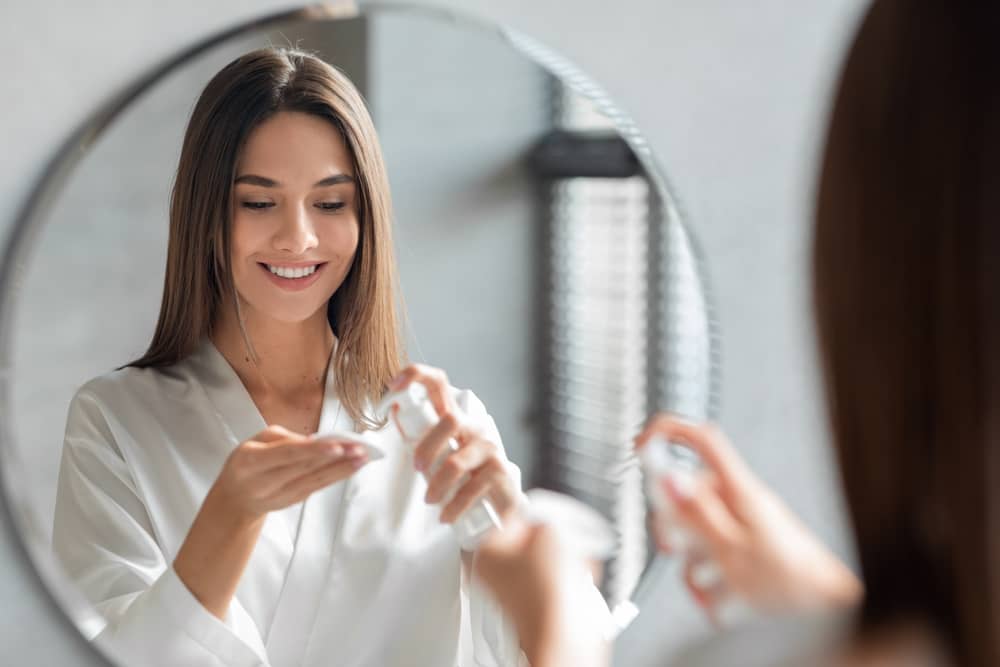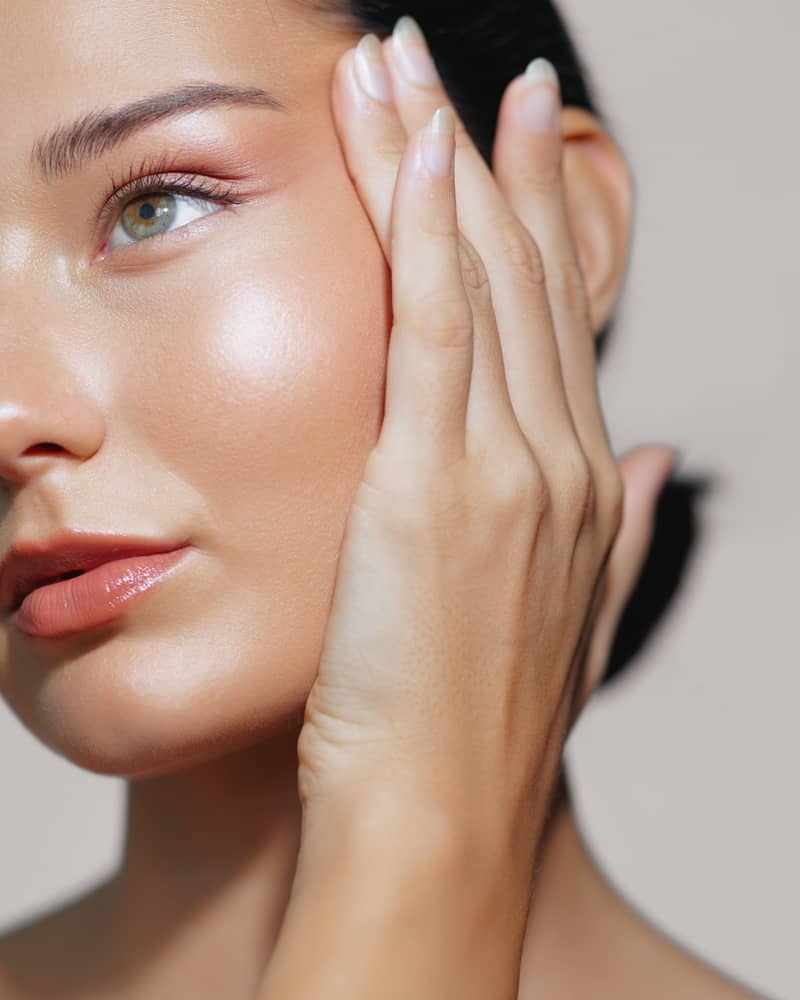The skincare secret that’s making dermatologists rethink everything they thought they knew about aging
A new field is quietly transforming aesthetics.
It’s not another ingredient fad or device race.
It’s the science of how the skin and brain communicate — and how understanding that connection can make your results stronger and your marketing smarter.
This field is called neurocosmetics, and it represents one of the biggest shifts in skincare science since peptides first entered the market.
In simple terms, neurocosmetics target the skin–brain axis — the biochemical conversation that links emotional state with visible aging.
When a patient feels stress, the brain releases cortisol, substance P, and other neurochemicals that increase inflammation and break down collagen.
When the brain feels calm and balanced, repair accelerates.
That’s why the latest research doesn’t just look at lines and wrinkles — it looks at mood, stress, and the signals that shape them.
The Science Behind the Trend
According to a 2025 analysis in Cosmetics Design Europe, the skin isn’t just a barrier. It’s a sensory organ loaded with neurotransmitters like serotonin, dopamine, and acetylcholine — the same chemicals that regulate emotions.
When stress is chronic, that network misfires, leading to redness, roughness, and loss of elasticity. But when balance returns, inflammation drops and cell renewal improves.
The Innovare Journal of Applied Pharmacy calls this “psychodermatology,” and it’s driving a new class of skincare ingredients that target both biology and psychology.
For medical aesthetic professionals, the implications are clear:
Treating only the surface is no longer enough.
Today’s patients expect results they can see — and feel.
Ingredients That Prove the Point

Among the dozens of actives being studied, a few stand out for both credibility and clinical performance.
Neuropeptides like Acetyl Hexapeptide-8, Palmitoyl Tripeptide-1, and Palmitoyl Tetrapeptide-7 are leading the charge.
Clinical studies published in the Journal of Cosmetic Dermatology and Wiley Clinical Journals show they reduce wrinkle depth by up to 30% and improve elasticity by 18% within 12 to 24 weeks.
Acetyl Hexapeptide-8, sometimes called “topical Botox,” relaxes facial tension without paralysis by blocking acetylcholine release at the nerve terminal.
The result: fewer expression lines and a softer, more natural look.
That’s measurable, visible, and safe — a rare combination in anti-aging.
Next come adaptogenic botanicals like Ashwagandha and Wild Indigo (Tephrosia purpurea).
These plants help the skin adapt to internal and external stressors by lowering cortisol and boosting endorphins.
Studies cited by VJ Cosmetology Clinics and Last Skincare report up to 70% reduction in local cortisol levels, restoring barrier function and natural radiance.
Adaptogens don’t just calm the skin. They calm the signal that ages it.
Then there are bioengineered actives — ingredients created to communicate directly with the skin–brain axis.
Examples include Zenakine™, Phytessence™ Green Coffee, and Synchrolife™.
Data from Croda Beauty shows these compounds enhance dopamine production, rebalance circadian rhythm, and reduce visible fatigue.
Patients report better sleep, improved mood, and smoother, brighter skin.
When science improves both sleep and skin, you know it’s more than cosmetic.
Regeneration and Restoration

Another area gaining traction involves exosomes and PDRN complexes — cellular messengers that help tissues repair faster.
These biotechnologies send DNA fragments and growth signals that restore communication between damaged cells.
According to Covalo’s research on the “Longevity Triad,” combining exosomes, PDRN, and neuropeptides produces synergistic results: stronger collagen networks, lower inflammation, and faster healing.
This isn’t hype. It’s biomolecular engineering applied to aesthetics.
And the sensory side matters too.
Polyphenols from Green Coffee and Passionflower deliver antioxidant defense and stimulate beta-endorphins through scent and touch.
As Face the Future explains, neuroantioxidants don’t just protect cells — they elevate mood through olfactory pathways.
That makes them perfect for spa environments where every detail, including aroma, supports emotional well-being.
Even the skin microbiome is part of the story.
Prebiotics and probiotics like Lactobacillus derivatives have been shown to reduce transepidermal water loss and inflammation, while stabilizing the skin’s stress response.
Balanced bacteria equal balanced nerves — and calmer, more resilient skin.
The Safety Question
Safety remains strong.
A 2024 review in SAGE Journals found peptide-based and botanical neuroactives to have very low irritation rates — typically mild redness that resolved quickly.
A PMC Clinical Review confirmed the same for probiotics and exosomes.
Dermatologist Mukta Sachdev described neurocosmetics as “safe, effective, and psychologically restorative when properly formulated.”
That’s the kind of endorsement patients — and regulators — appreciate.
Why This Matters for Med-Spas
You don’t need to become a biochemist to use this information.
You just need to communicate it clearly.
When you explain that your treatments help balance the skin–brain connection — lowering stress hormones, supporting collagen renewal, and improving both texture and tone — patients listen.

It feels new, but it’s also credible.
It speaks to emotion and evidence.
This is where marketing can finally catch up with science.
A 2025 report from FutureBridge found that brands linking skincare results with emotional well-being saw 40% higher engagement and repeat bookings.
That’s not by accident.
People buy results, but they stay for reassurance.
By framing your services within this new neurocosmetic perspective, you give patients both:
proof that what you do works, and a reason to feel connected to it.
What Comes Next
Global companies like Shiseido, L’Oréal, and Estée Lauder are already investing in this field.
An IE Brain industry forecast predicts neurocosmetics will define the premium skincare segment within five years.
That gives smaller clinics a rare advantage — the ability to lead locally before the giants dominate the conversation.
The opportunity is now.
By integrating neurocosmetic principles into your patient education and marketing, you position your brand as forward-thinking, credible, and grounded in science.
And that’s the kind of positioning that builds trust before the first appointment ever happens.
A Final Thought
Neurocosmetics show us that aging is not just biological — it’s psychological.
When you calm the body’s chemistry of stress, you change how the skin behaves.
And when you communicate that connection through clear, honest copy, you give patients something more valuable than promises.
You give them understanding.
If you’d like help crafting that message — one that connects the science in your treatment room to the emotion in your patient’s decision — I can help.
I specialize in turning clinical data into words that build trust and increase bookings.
Together, we’ll make your marketing as intelligent as your medicine.
Let’s write the story your patients have been waiting to hear.
Sources & Further Reading on Neurocosmetics
- Cosmetics Design Europe – Neurocosmetics: A paradigm shift in dermatology and cosmetic science
- Innovare Journal of Applied Pharmacy – The Skin–Brain Axis: A New Dimension in Dermatology
- Journal of Cosmetic Dermatology – Clinical Evaluation of Acetyl Hexapeptide-8
- PubMed – Acetyl Hexapeptide-8: Mechanisms of Action and Clinical Results
- VJ Cosmetology Clinics – Understanding Neurocosmetics and Its Benefits
- Last Skincare – Unlock the Secret to Ageless Skin: The Neuroscience Behind Neurocosmetics
- Croda Beauty – Neurocosmetics and the Science of Feel-Good Skincare
- Covalo Blog – The Longevity Triad: Exosomes, PDRN, and Neurocosmetics
- Face the Future – Neurocosmetic Skincare Ingredients to Look Out For
- FutureBridge – Beyond Skin Deep: Neurocosmetics as the Next Frontier in Beauty
- SAGE Journals – Safety and Tolerability of Peptide-Based Skincare
- PubMed Central – Evaluating Skin Irritation from Topical Peptide Complexes
- Skinlink Consulting – Dr. Mukta Sachdev: Insights into Neurocosmetics
- IE Brain – Neurocosmetics: Transforming Beauty Through the Power of Neuroscience

View comments
+ Leave a comment